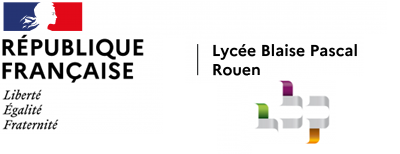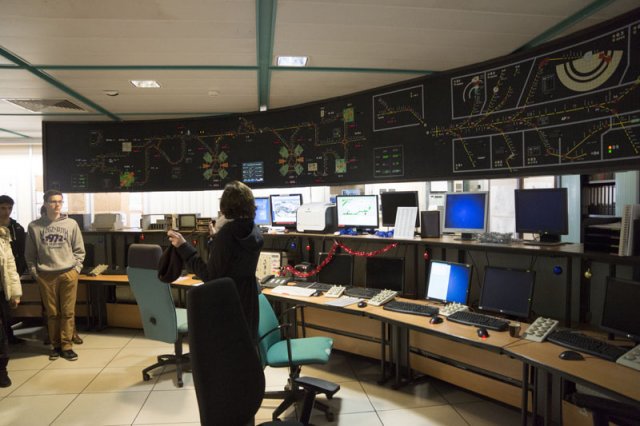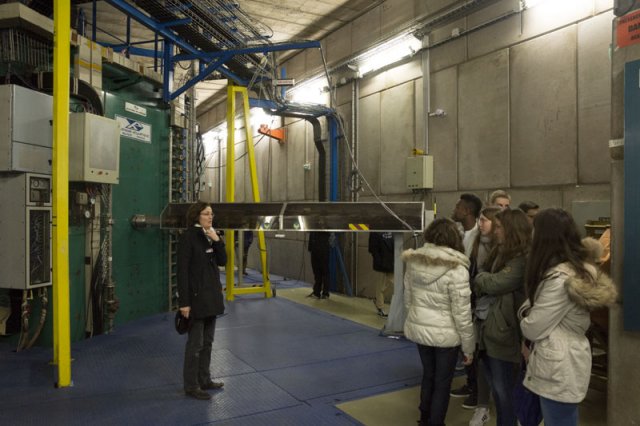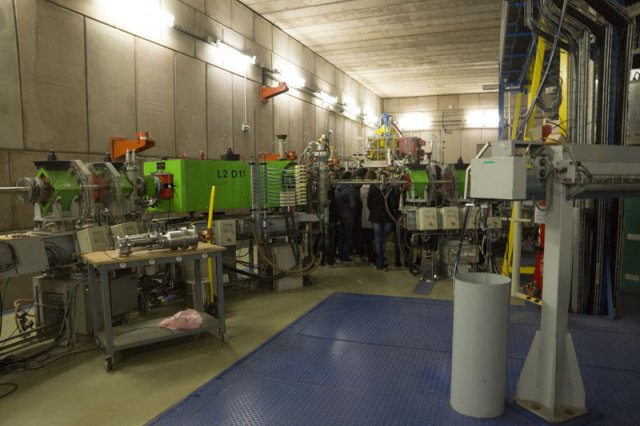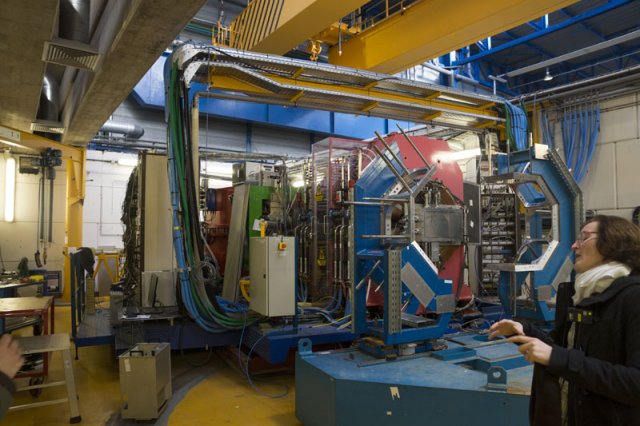visit of GANIL
The second important place to visit near Rouen is Caen. There are many companies and research centres which need particles accelerators . In fact, there are some 30,000 accelerators worldwide, though most are small and used for medical or industrial purposes. A lot of this companies are grouped together in the same area. In Caen we visited two places the GANIL where we accelerate entire nuclei in order to study the strong forces at work inside of a nucleus and Cyceron where they study medical imaging and nuclear medicine.
In the beginning of the visit we were in a conference room, where the guide show us a presentation of the place where there is the GANIL. This place is composed of the GANIL, Cyceron, other laboratories and a university.
There are a lot of different nuclei and the GANIL try to find new ones, and for that they increase the speed of nucleus and they throw them on a small target, then they gather new ions or nucleus. But the machines just work 6 months of the years, the other 6 months the scientists prepared the experiment.
The GANIL is a centre of physics and nuclear search. The researchers work and accomplish experiments with ions. Inside the GANIL, we saw the source of the ions, the two cyclotrons used to accelerate the particles and the detectors used in experiment rooms. All these components are linked by beams lines which drives the ions. The beams lines are orientated by magnets which deviate the particles trajectory. The magnetic field is produced by the union of copper and electricity. In the beam line there are 1000 billions particles. The particles are driven very quickly at 10 000 km/s in the vacuum.
Then we have visited the main control post, it is a big room used for controlling the circuit of particles. In this room there are a lot of computers and a big board where we can see particles moving on each room we visited previously. In the control centre, they take care of the staff by being sure that no one is in the centre when the beam is on because of the radioactivity in accelerators’ rooms.
The control room of the GANIL. At the top we can see all the beam lines from the source to the cyclotron and on the right hand side driven to the experiment rooms. All the part of the accelerator if controlled from here.
One of the two cyclotron used to accelerate the heavy ions in the GANIL. In green you can see the metallic frame of the magnets.
We can see the beamline driving the ions to the cyclotron. Along the beam line we can see magnetic quadripoles to focus the beam and a magnetic dipole to curve the trajectory of the beam.
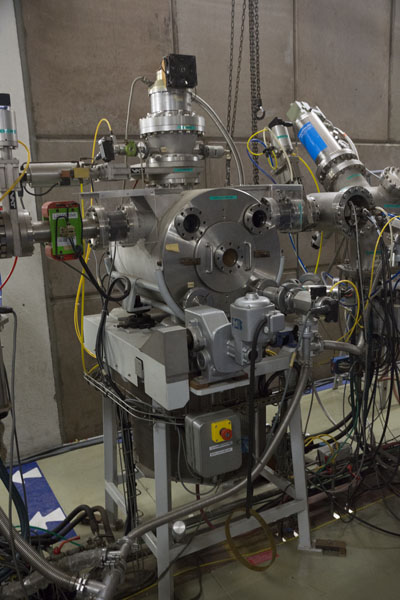
Between the two synchrotron there is a stripper which remove electrons from the ions. The charge of the ions is increased and they are easier to accelerate.
At the end the beam is conducted in an experiment room, for example, here we can see a spectrometer to identify the produce of the collisions.
